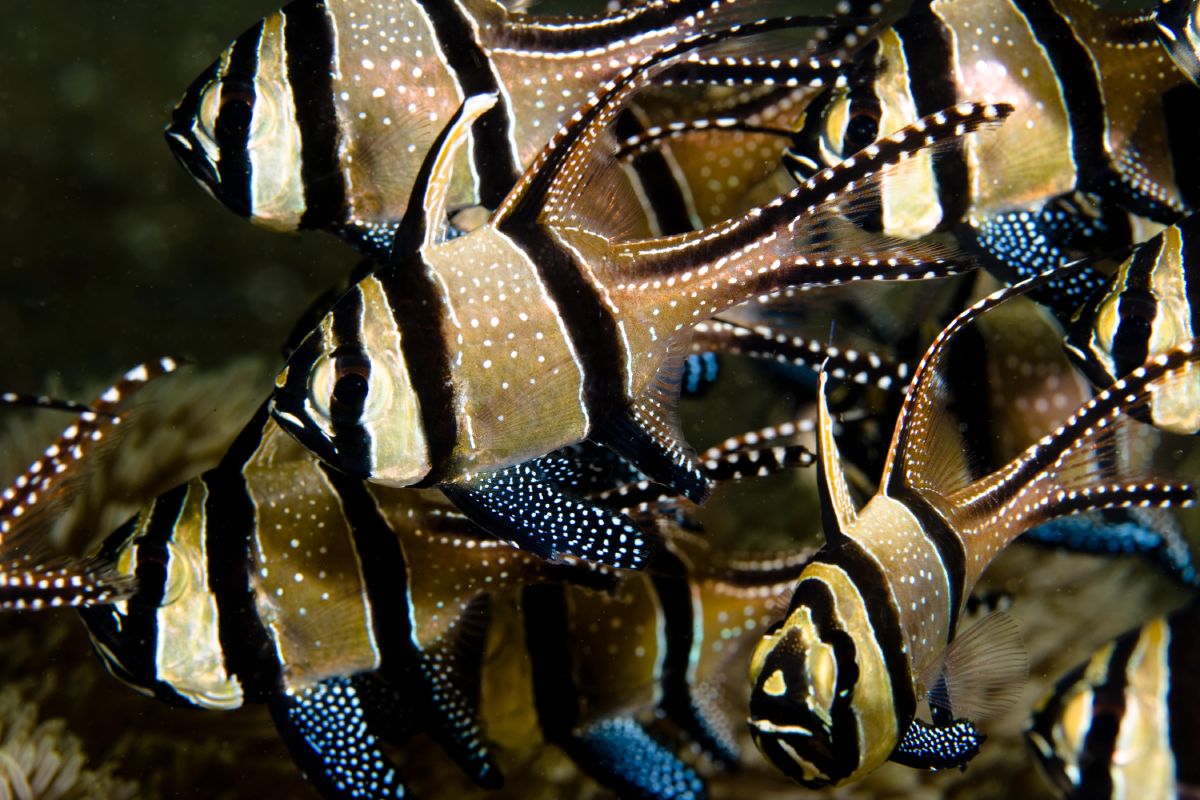
Banggai cardinalfish, like other species of cardinalfish, are nocturnal and tend to hide during the day. This is why you should provide your Banggais with ample hiding space in the form of ledges and caves. However, over time, these fish will become accustomed to feeding during the day and may spend less time hiding.
This particular species of cardinalfish isn’t among the biggest and will grow to about three inches in length when fully grown. You’ll often find these fish available as juveniles when they’re around one to 1.5 inches in size.
The Banggai cardinalfish is pretty calm and docile, making it suitable for pairing with many other species. However, you should avoid keeping two or more of these cardinalfish if they’re of the same gender. At the same time, it’s often difficult to tell the difference between males and females, especially when young. You can tell the difference when they get a little older and the male develops two distinct nubs near their reproductive parts.
Some compatible tank mates for this fish include:
These are simply a few of the many potential tank mates for this species. They generally get along with most fish and won’t get too aggressive or territorial.